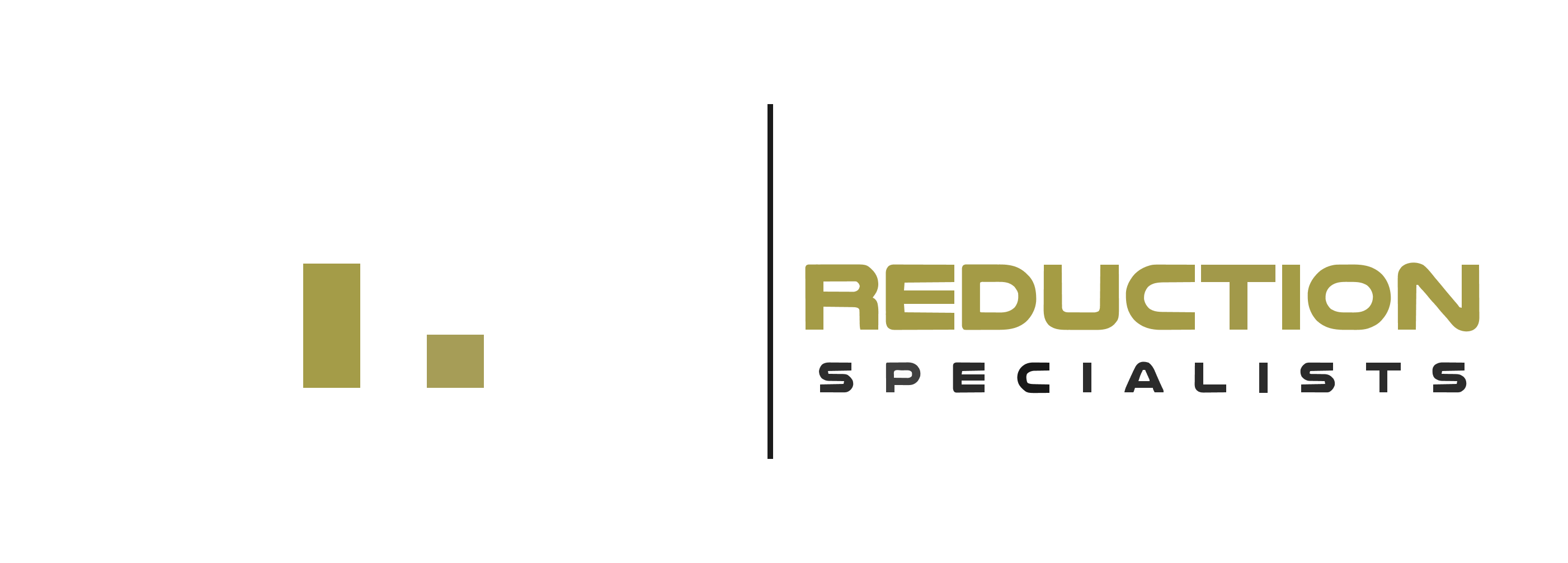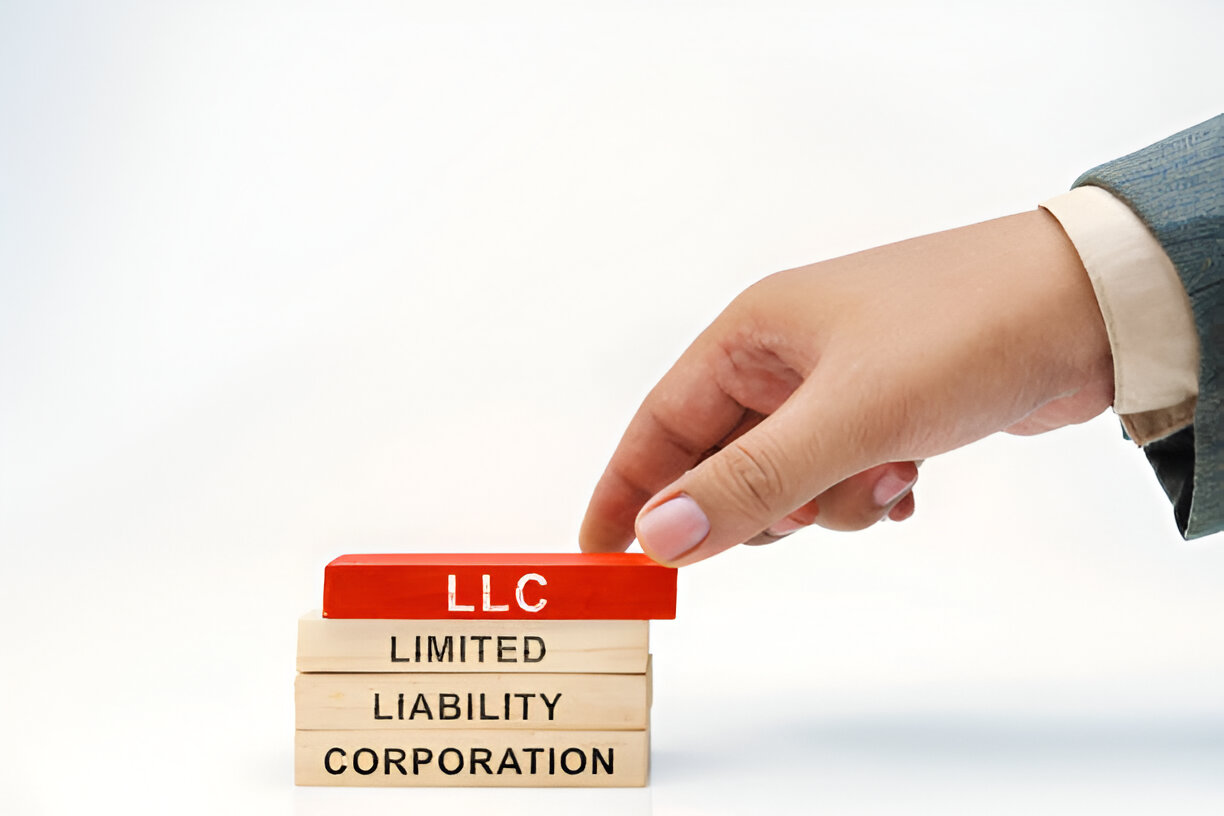How to Choose Between LLC, S-Corp, or Partnership: A Complete Tax Guide for Business Owners
Choosing the right business structure can make or break your tax strategy. As a business owner, you’re faced with a crucial decision: Should you opt for an LLC, S-Corp, or Partnership? The answer lies in understanding how each structure impacts your taxes, liability protection, and operational flexibility. According to recent IRS data, businesses often lose thousands in tax savings by choosing the wrong structure. In this comprehensive guide, we’ll break down: • The distinct tax advantages of each business structure • How to protect your personal assets effectively • Key differences in operational requirements • Potential tax savings opportunities • Common pitfalls to avoid Whether you’re launching a new venture or considering restructuring your existing business, we’ll help you make an informed decision that aligns with your financial goals and business vision. Let’s dive into the specifics of each business structure and find the perfect fit for your enterprise.
Key Takeaways:
- – LLCs offer flexibility in taxation and strong liability protection, making them ideal for small business owners seeking operational simplicity and personal asset protection.
- – S-Corporations provide potential tax savings through reduced self-employment taxes, but come with stricter operational requirements and eligibility criteria.
- – Partnerships allow for pass-through taxation and greater flexibility in profit sharing, though partners remain personally liable for business debts.
- – The choice of business entity affects not only your tax obligations but also your ability to raise capital, maintain compliance, and protect personal assets.
- – Your decision should align with your business size, growth plans, and tax efficiency goals while considering factors like operational complexity and compliance requirements.
Understanding Business Entity Types
When starting a business, one of the most crucial decisions you’ll face is choosing the right business structure. This choice impacts everything from your tax obligations to personal liability protection.
Sole Proprietorship and General Partnership
A sole proprietorship is the simplest business structure, where you and your business are legally the same entity. It’s easy to set up and gives you complete control, but offers no personal liability protection. Similarly, a general partnership involves two or more people sharing ownership, profits, and responsibilities, but also sharing unlimited personal liability for business debts.
Corporations (C-Corps and S-Corps)
Corporations are more complex entities that exist separately from their owners. C-Corporations can have unlimited shareholders and are subject to double taxation – once at the corporate level and again when dividends are distributed. S-Corporations offer pass-through taxation, avoiding double taxation, but have stricter requirements like limiting ownership to 100 U.S. citizens or residents.
Limited Liability Company (LLC)
LLCs combine the best features of corporations and partnerships. They provide personal liability protection while maintaining management flexibility. LLCs can choose their tax treatment – they can be taxed as sole proprietorships, partnerships, S-corporations, or C-corporations. This flexibility makes them a popular choice for small to medium-sized businesses.
Each business structure has unique characteristics:
– Formation requirements
– Tax implications
– Management flexibility
– Liability protection
– Ownership restrictions
– Compliance obligations
The right choice depends on various factors:
– Business size and growth plans
– Number of owners
– Tax preferences
– Management structure needs
– Investment requirements
– Industry regulations
???? Key Takeaway: Choosing between business entities requires careful consideration of tax implications, liability protection, and management flexibility, with each structure offering distinct advantages and limitations for different business needs.
Tax Implications for Each Entity
LLC Tax Treatment
LLCs offer remarkable flexibility in taxation. By default, single-member LLCs are treated as sole proprietorships, while multi-member LLCs are taxed as partnerships. Business income and losses pass through to the owners’ personal tax returns, reported on Schedule C. Members pay self-employment tax on their share of profits.
One of the most appealing aspects is that LLCs can elect to be taxed as corporations (either C-corp or S-corp) by filing Form 8832. This flexibility allows businesses to adapt their tax structure as they grow without changing their legal entity structure.
S Corporation Tax Benefits
S corporations provide a unique tax advantage through pass-through taxation while potentially reducing self-employment taxes. Unlike LLC members, S-corp owners who work in the business must receive a reasonable salary, with only the remaining profits being exempt from self-employment tax.
The business itself doesn’t pay federal income taxes. Instead, profits and losses flow through to shareholders’ personal tax returns in proportion to their ownership stakes. This structure helps avoid the double taxation issue faced by C corporations.
Partnership Tax Considerations
Partnerships enjoy pass-through taxation similar to LLCs, where profits and losses flow through to partners’ individual tax returns. Each partner reports their share of income on Schedule K-1, regardless of whether distributions were made.
Partners must pay self-employment tax on their entire share of business income. However, partnerships offer unique flexibility in allocating profits, losses, and tax deductions among partners, provided these allocations have substantial economic effect.
???? Key Takeaway: Each business structure offers distinct tax implications – LLCs provide flexibility in tax treatment, S corporations can reduce self-employment taxes, and partnerships allow customizable profit allocation while maintaining pass-through taxation.
Legal Protection and Liability
When it comes to protecting your personal assets, both LLCs and corporations offer robust legal shields. These business structures create a separation between your personal and business finances, safeguarding your personal wealth from business-related claims.
Understanding the Corporate Veil
The corporate veil is a legal concept that establishes a clear boundary between business owners and their company. This separation means creditors typically can’t pursue your personal assets to satisfy business debts or legal judgments.
However, maintaining this protection requires careful attention to corporate formalities. You must keep business and personal finances separate, maintain proper documentation, and follow all required legal procedures.
Piercing the Corporate Veil
Courts may “pierce the corporate veil” if business owners fail to maintain proper separation or engage in fraudulent activities. This can happen when:
– Business and personal funds are commingled
– Corporate formalities are ignored
– The business is undercapitalized
– The company operates as an alter ego of the owner
Differences in Protection Levels
While both LLCs and corporations provide liability protection, there are subtle differences:
– LLCs generally require less paperwork and fewer formalities
– Corporations must maintain strict record-keeping and hold regular meetings
– S-corporations face additional scrutiny due to their special tax status
– Partnerships offer the least protection, with general partners personally liable for business debts
Additional Protection Measures
To strengthen your liability protection:
– Maintain comprehensive business insurance
– Keep detailed financial records
– Follow all state compliance requirements
– Document major business decisions
– Use written contracts for significant transactions
???? Key Takeaway: Both LLCs and corporations provide strong liability protection for business owners, but maintaining this shield requires proper documentation, separate finances, and adherence to legal formalities.
Growth and Investment Potential
Raising Capital
When it comes to growth potential, each business structure offers distinct advantages for raising capital and attracting investors. LLCs provide flexibility in structuring ownership and profit-sharing arrangements, making them attractive for private investors seeking customized terms.
Stock Issuance
S corporations can issue stock, but they’re limited to one class of stock and 100 shareholders maximum. This restriction can make it challenging to attract diverse investors or implement complex equity compensation plans. However, the familiar corporate structure often appeals to traditional lenders and investors.
Investment Appeal
LLCs shine in their ability to create unique profit-sharing arrangements and special allocations. This flexibility allows them to tailor investment terms to meet specific investor needs. They can also accommodate foreign investors, unlike S corporations which restrict ownership to U.S. citizens and residents.
Future Growth Considerations
For businesses planning significant expansion or potentially going public, careful consideration of the structure is crucial. While S corporations can convert to C corporations relatively easily for an IPO, LLCs may face more complex conversion processes and potential tax implications.
Financing Options
Both structures can access traditional business loans, but S corporations might have a slight advantage due to their familiar corporate structure. Banks and financial institutions often have standardized lending processes for corporations, potentially streamlining the loan approval process.
???? Key Takeaway: Choose your business structure based on long-term growth plans – LLCs offer flexibility for private investment, while S corporations provide a more traditional path for conventional financing and potential public offerings.
Formation Requirements and Compliance
Initial Formation Process
Starting a business entity requires careful attention to state-specific requirements and documentation. Whether you choose an LLC, S-Corp, or Partnership, you’ll need to file formation documents with your state’s Secretary of State office. For LLCs, this means submitting Articles of Organization, while corporations file Articles of Incorporation.
The process typically involves selecting a unique business name, designating a registered agent to receive legal documents, and paying the required filing fees. These fees vary by state, ranging from $50 to several hundred dollars. You’ll also need to obtain an Employer Identification Number (EIN) from the IRS, which serves as your business’s tax ID.
Ongoing Compliance Requirements
Maintaining your business entity status demands consistent attention to compliance obligations. All three structures must file annual reports and pay associated fees to their state. S-Corporations face stricter requirements, including regular board meetings, detailed meeting minutes, and maintaining corporate bylaws.
LLCs need to maintain an operating agreement outlining ownership and management structure, though requirements are generally more flexible. Partnerships should have a comprehensive partnership agreement in place. All entities must keep accurate financial records, maintain separate business bank accounts, and file appropriate tax returns.
For S-Corporations, additional compliance includes:
– Holding annual shareholder meetings
– Maintaining corporate minutes
– Following strict stock ownership rules
– Filing Form 2553 for S-Corporation election
Regular review of compliance requirements helps avoid penalties and maintains your entity’s good standing with state authorities.
???? Key Takeaway: Successful business formation requires proper documentation filing and ongoing compliance management, with S-Corporations facing the most stringent requirements compared to LLCs and Partnerships.
Flexibility and Management Structure
When it comes to managing your business, both LLCs and S corporations offer distinct approaches to organizational structure and operational flexibility. Let’s explore how these entities differ in their management requirements and adaptability.
Management Requirements
LLCs provide remarkable flexibility in how you run your business. You can choose between member-managed or manager-managed structures, allowing you to tailor the management style to your specific needs. There’s no requirement for formal meetings, board appointments, or extensive record-keeping, making it easier to focus on growing your business.
S corporations, however, must adhere to stricter corporate formalities. They require a board of directors, regular shareholder meetings, and detailed documentation of major business decisions. You’ll need to maintain corporate minutes and follow traditional corporate hierarchy, which can be more time-consuming but provides clear organizational structure.
Operational Flexibility
LLCs shine when it comes to operational flexibility. You can easily modify your operating agreement to accommodate changing business needs, create custom profit-sharing arrangements, and adapt quickly to market conditions. This flexibility extends to ownership structure, allowing both domestic and foreign investors to participate in the business.
S corporations face more rigid operational constraints. All profits and losses must be distributed according to ownership percentages, and you’re limited to one class of stock. While this standardization can simplify some aspects of business operations, it may restrict your ability to create innovative business arrangements or attract certain types of investors.
Decision-Making Process
In an LLC, decision-making processes can be customized through your operating agreement. You can establish voting rights, delegate authority, and create management committees that align with your business goals. This flexibility allows for quick adaptation to changing market conditions.
S corporations follow a more structured decision-making hierarchy. Major decisions typically require shareholder approval, and day-to-day operations are managed by appointed officers. While this formal structure provides clear accountability, it may slow down decision-making in fast-paced business environments.
???? Key Takeaway: LLCs offer greater management flexibility and simpler operational requirements, while S corporations provide a more structured, traditional corporate framework with standardized processes and clearer hierarchies.
Making the Right Choice
Choosing between an LLC, S-Corp, or Partnership is a crucial decision that can significantly impact your business’s future. Let’s explore how to make this important choice with confidence.
Assess Your Business Goals
Start by evaluating your long-term business objectives. If you’re planning rapid growth and seeking outside investment, an S-Corp might be ideal due to its structured management approach. For simpler operations with flexibility in mind, an LLC could be your best bet.
Consider Your Tax Situation
Take a close look at your financial situation and tax preferences. While all three structures offer pass-through taxation, each has unique implications. S-Corps can help reduce self-employment taxes, while LLCs offer more flexibility in profit distribution.
Evaluate Management Preferences
Think about how you want to run your business. LLCs provide more management flexibility, while S-Corps require formal management structures with officers and directors. Partnerships allow shared control but need clear agreements to prevent disputes.
Factor in Compliance Requirements
Each structure comes with different compliance obligations. S-Corps typically have the most stringent requirements, including regular board meetings and detailed record-keeping. LLCs and Partnerships generally have fewer formal requirements, making them easier to maintain.
Consult Professional Advisors
Before making your final decision, consult with tax professionals and legal advisors. They can provide personalized guidance based on your specific circumstances, helping you understand the long-term implications of each choice.
???? Key Takeaway: Choose your business structure by carefully evaluating your goals, tax preferences, management style, and compliance capabilities, while seeking professional guidance for the best long-term outcome.
Conclusion
Selecting the right business structure is a pivotal decision that shapes your company’s financial future and tax obligations. After exploring the nuances of LLCs, S-Corps, and Partnerships, you’re now equipped with the knowledge to make an informed choice that aligns with your business goals and tax strategy. Remember, each structure offers unique advantages – from the flexibility of an LLC to the tax benefits of an S-Corp and the collaborative nature of Partnerships. Consider consulting with a qualified tax adviser to evaluate your specific circumstances, as they can provide personalized guidance based on your business size, income projections, and long-term objectives. Take action today by reviewing your current business structure or planning your new venture with these insights in mind. Whether you prioritize pass-through taxation, limited liability protection, or operational simplicity, your choice of business entity will significantly impact your tax efficiency and business success. The right structure isn’t just about saving money – it’s about creating a solid foundation for your business’s growth and prosperity.
FAQs
What happens if I want to change my business structure later? Can I switch from an LLC to an S-Corp?
Yes, you can change your business structure later. Converting from an LLC to an S-Corp is possible by filing Form 2553 with the IRS. However, the transition may have tax implications and requires careful planning. Consult a tax adviser to understand the specific requirements and consequences.
Are there any restrictions on who can own an S-Corporation?
S-Corporations have ownership restrictions. They can’t have more than 100 shareholders, can only issue one class of stock, and shareholders must be U.S. citizens or residents. Additionally, other corporations, partnerships, and non-resident aliens cannot be shareholders.
How does self-employment tax differ between LLC and S-Corp structures?
In an LLC, all profits are subject to self-employment tax. However, in an S-Corp, only the owner’s salary is subject to self-employment tax, while remaining profits can be taken as distributions. This potential tax savings makes S-Corps attractive for many business owners.
What are the minimum record-keeping requirements for each business structure?
LLCs typically have simpler record-keeping requirements with basic operating agreements and annual reports. S-Corps and Partnerships require more detailed documentation, including regular board meetings, meeting minutes, stock ledgers, and comprehensive financial records.
How do these different business structures affect my ability to raise capital?
S-Corps can only issue one class of stock, limiting funding options. LLCs offer greater flexibility in profit distribution and capital raising. Partnerships can modify their agreement to accommodate new investors, making them adaptable for potential investor relationships.
What are the state-specific tax considerations when choosing a business structure?
State tax treatments vary significantly. Some states don’t recognize S-Corp status or charge additional fees for certain business structures. Each state has different tax rates and reporting requirements, making location an important factor in your business structure decision.







